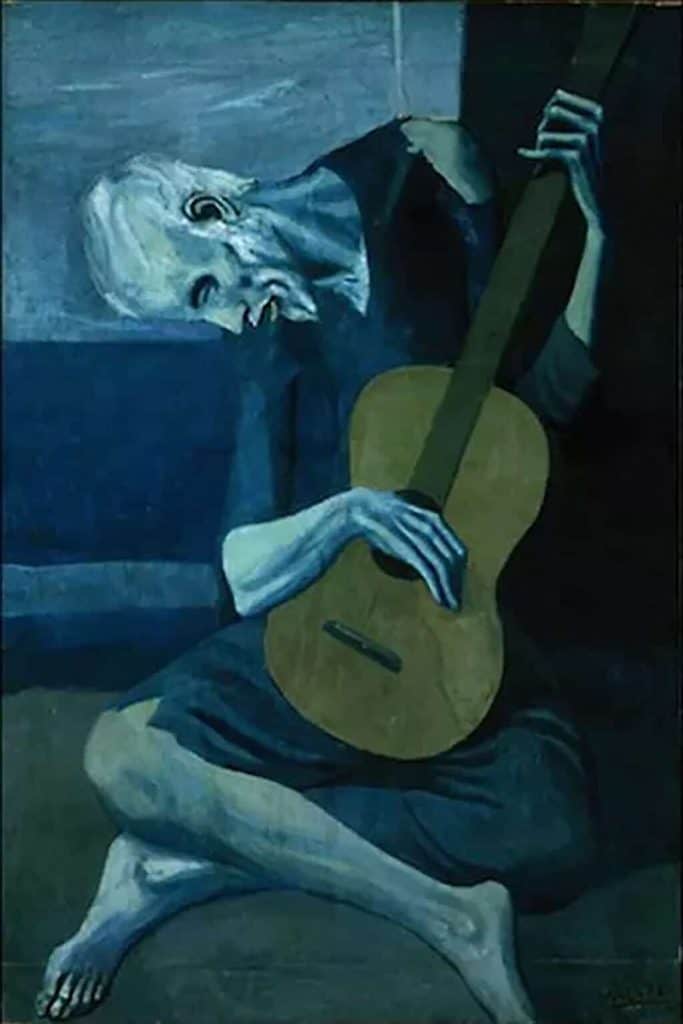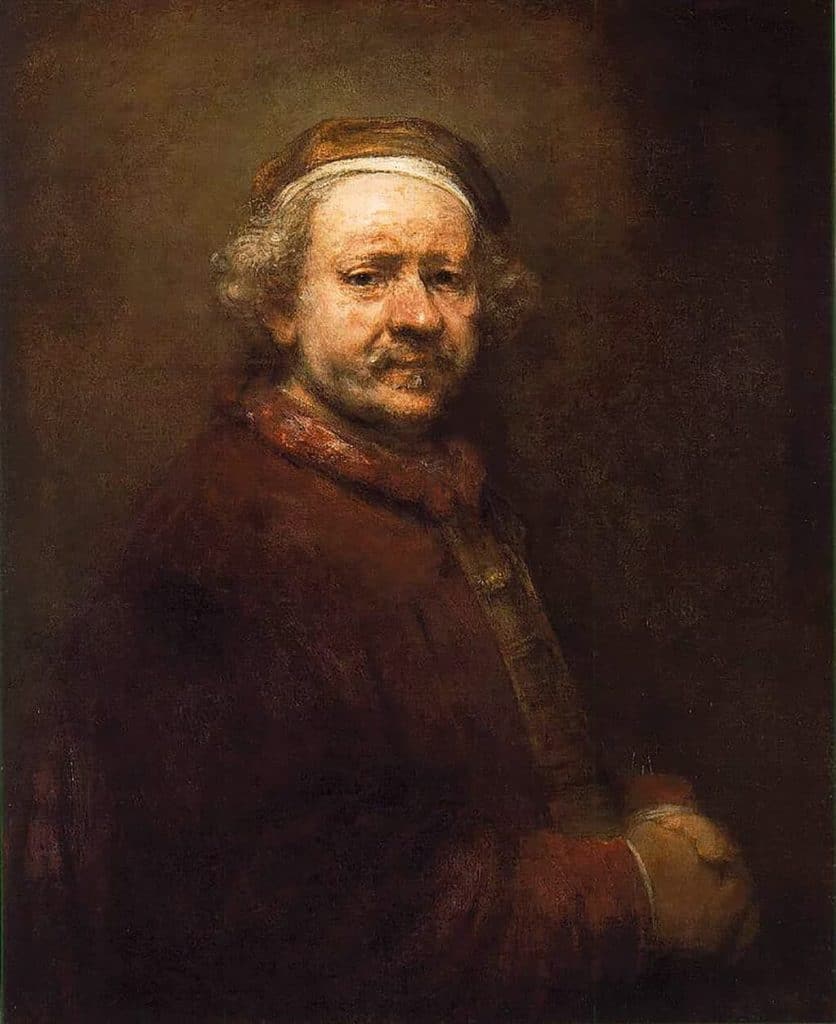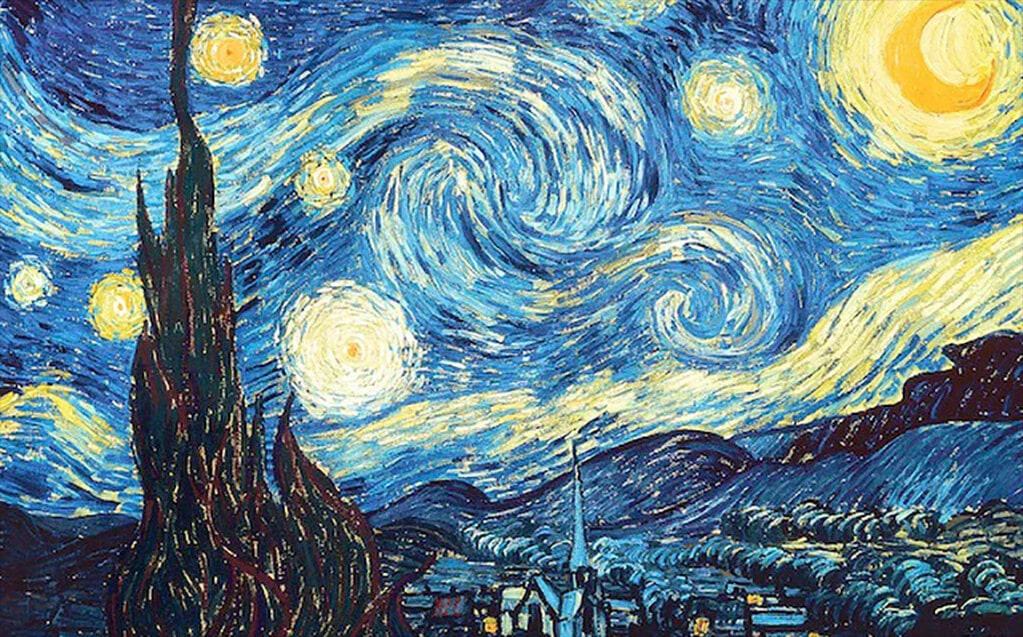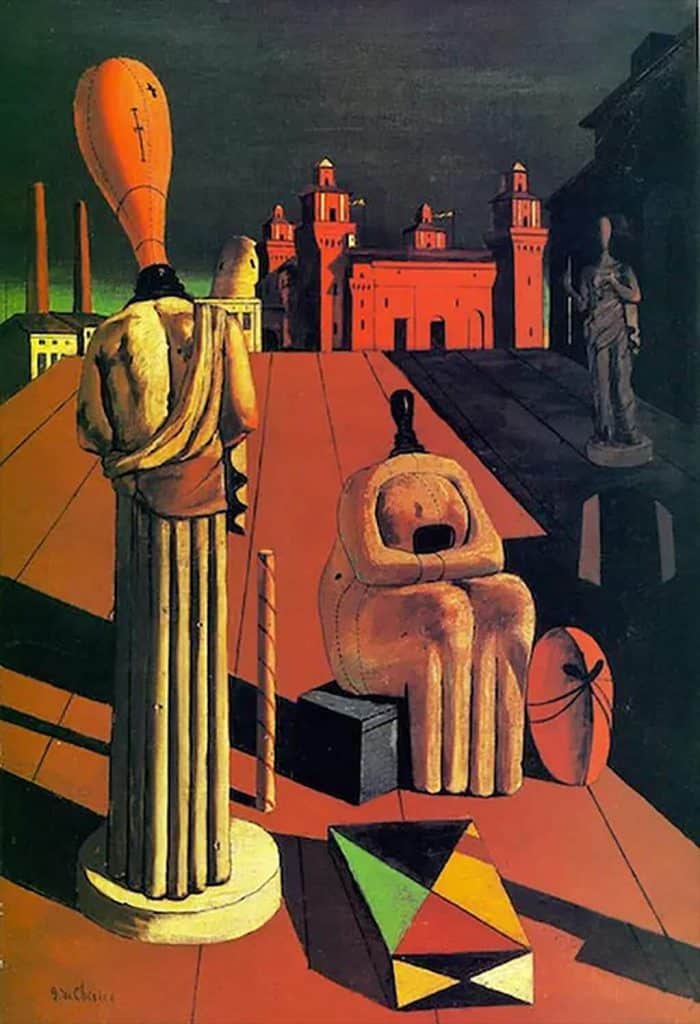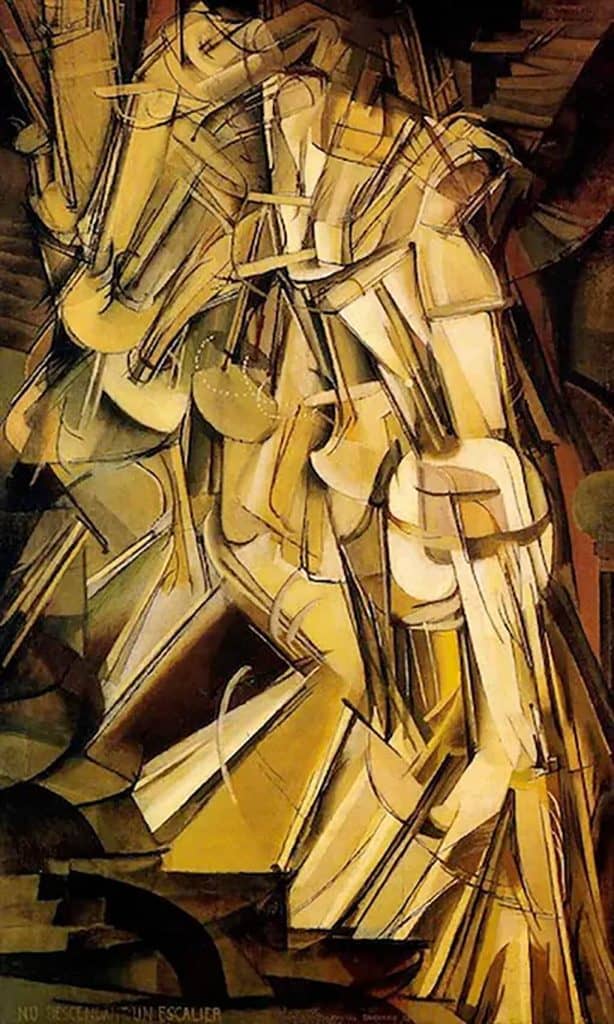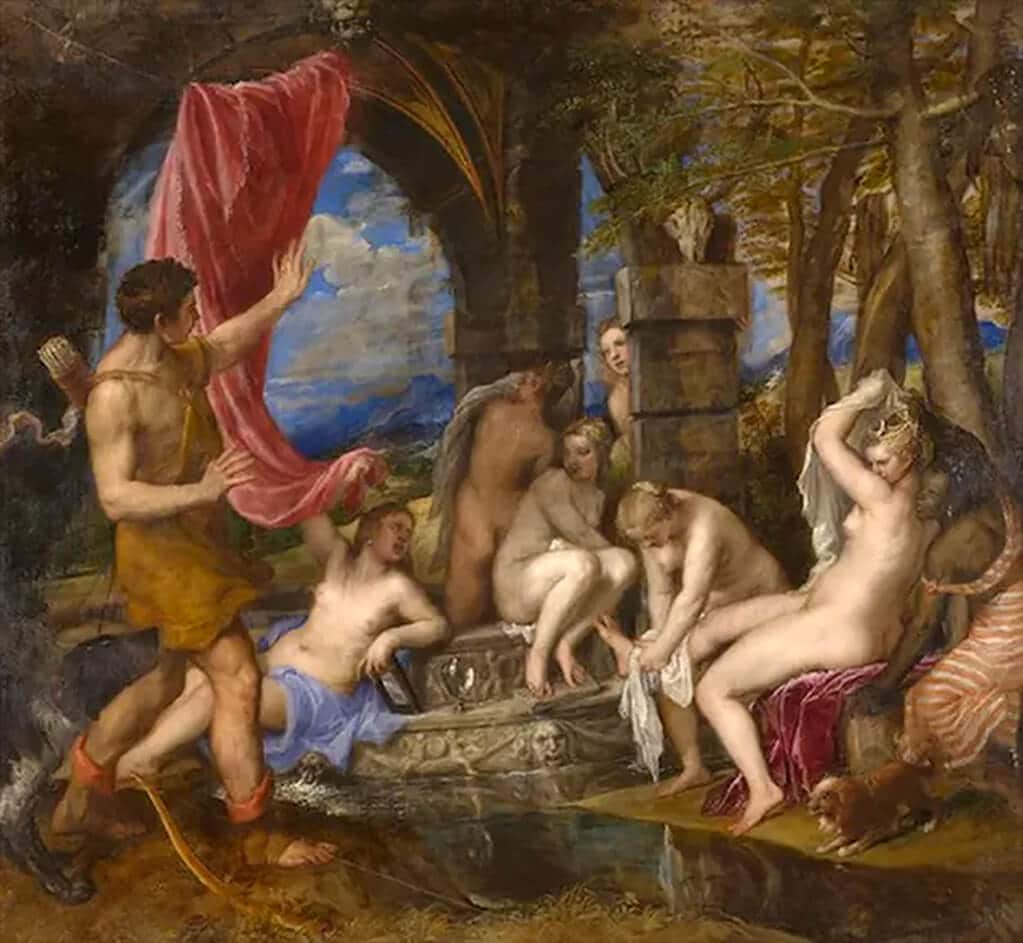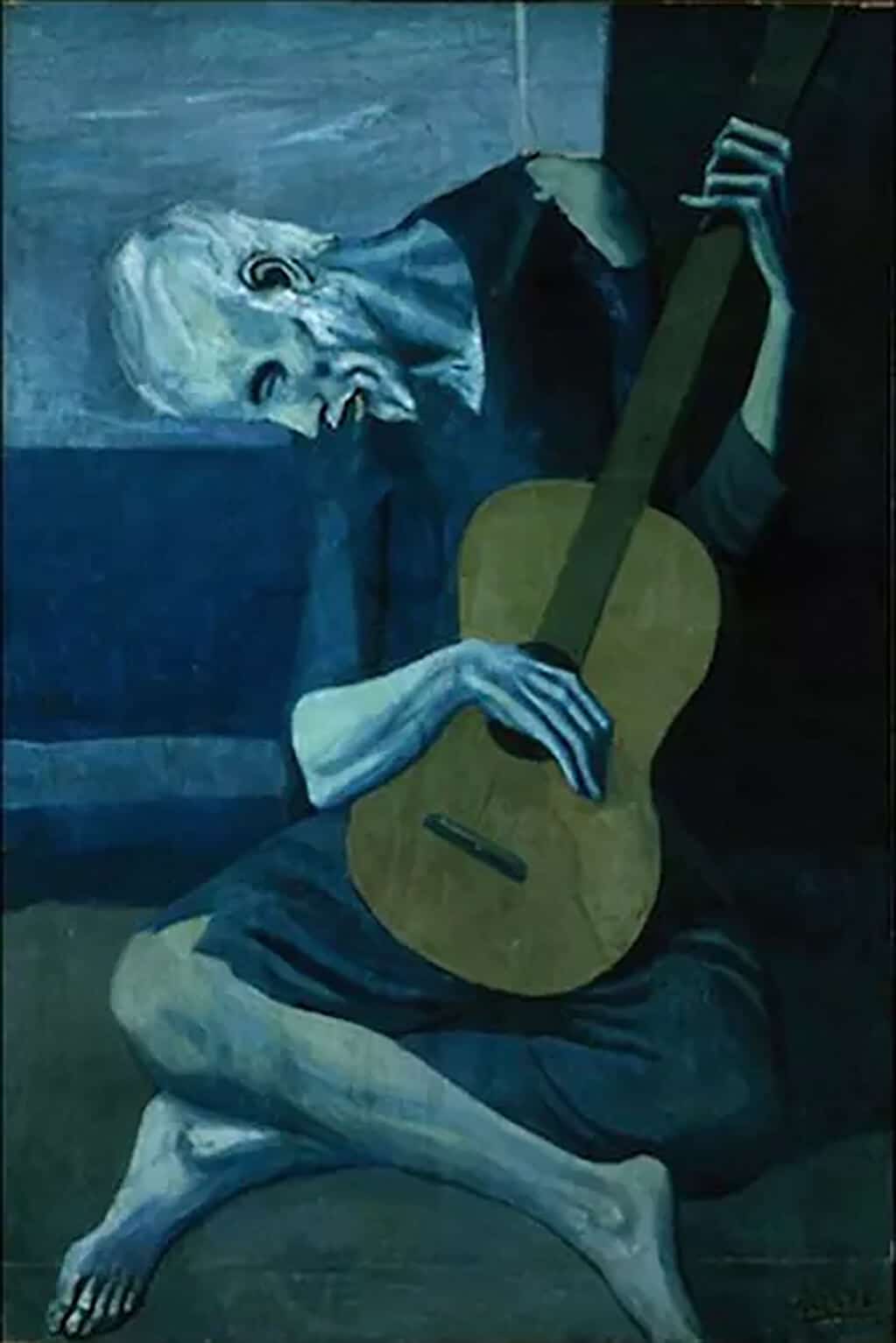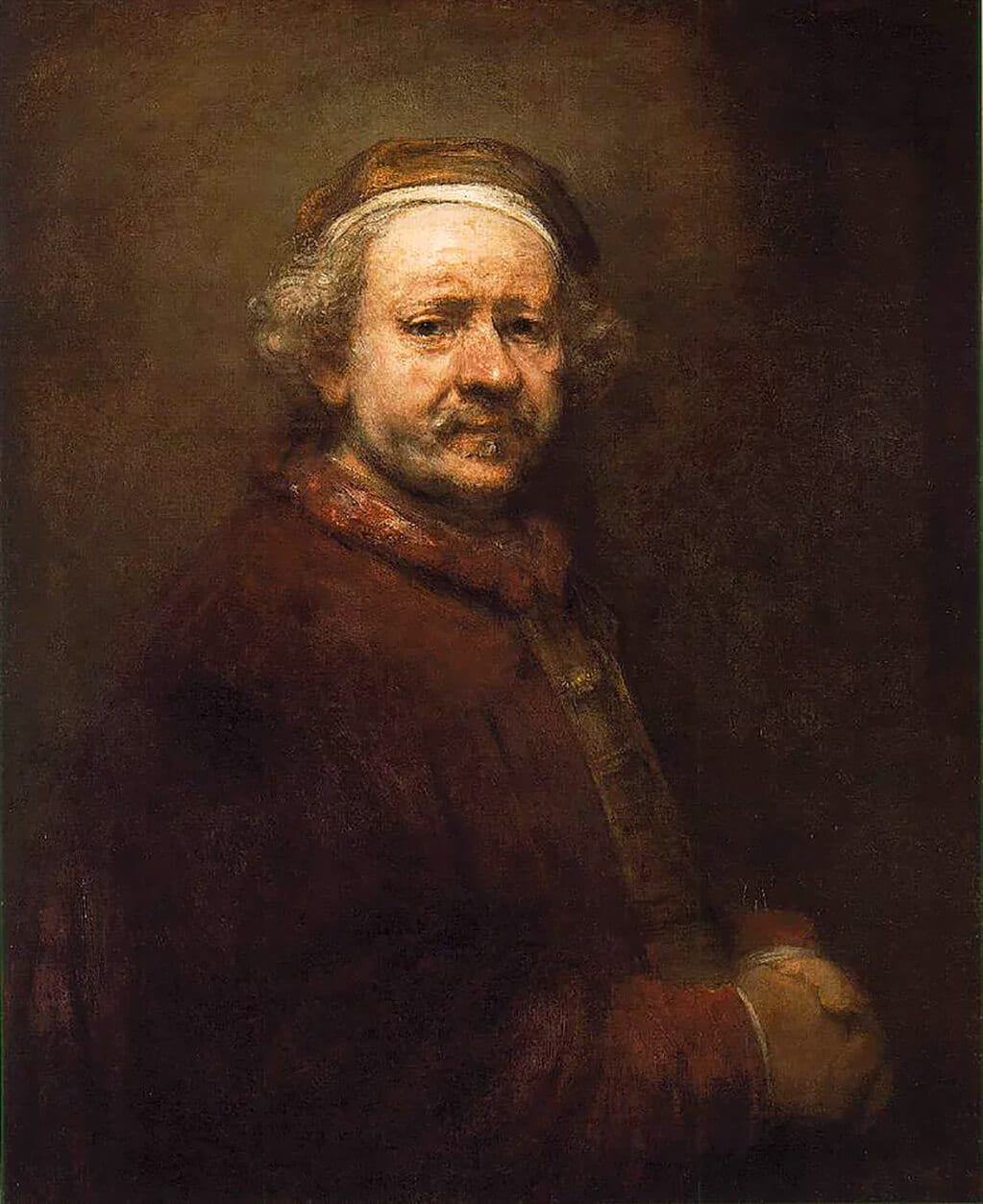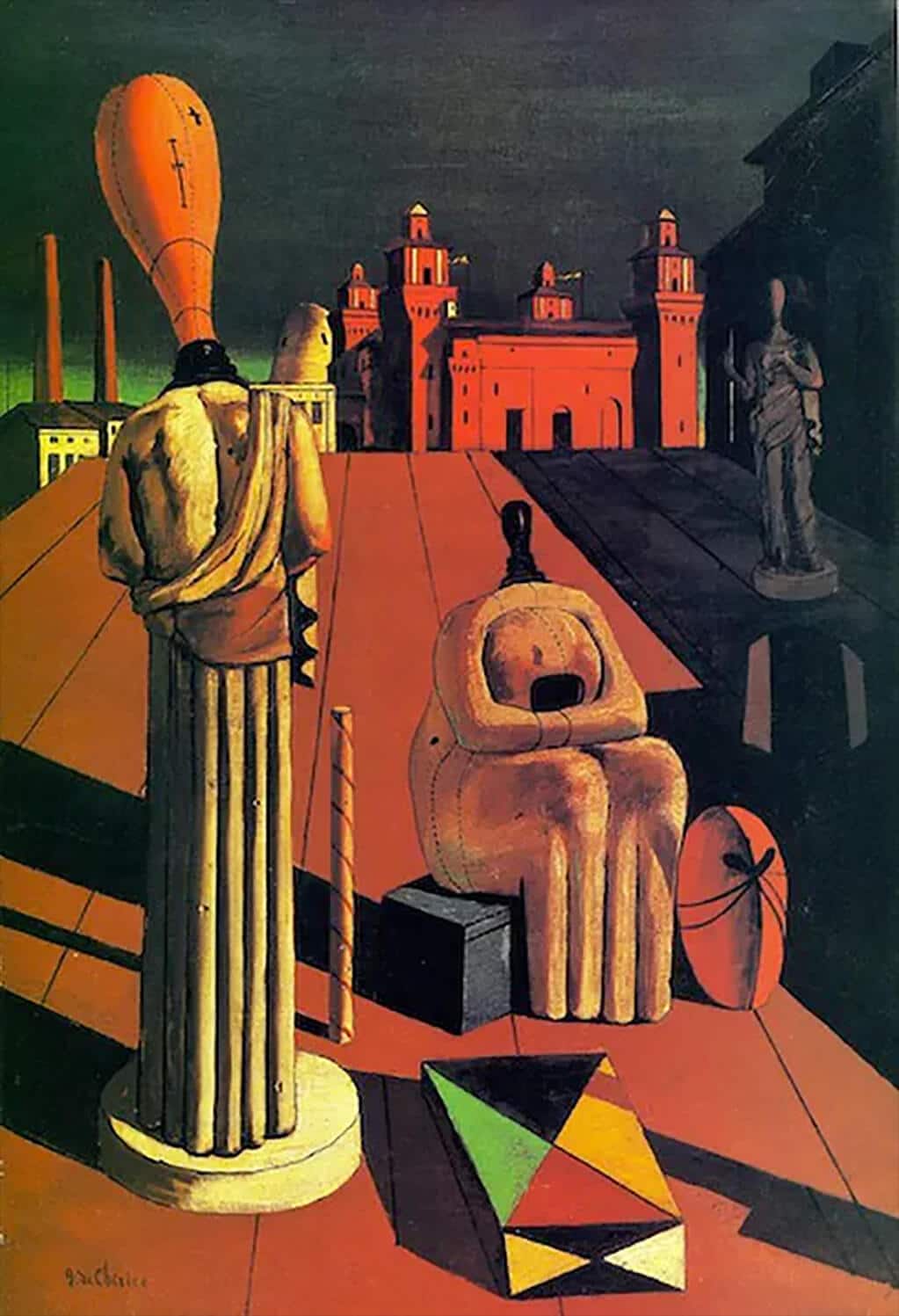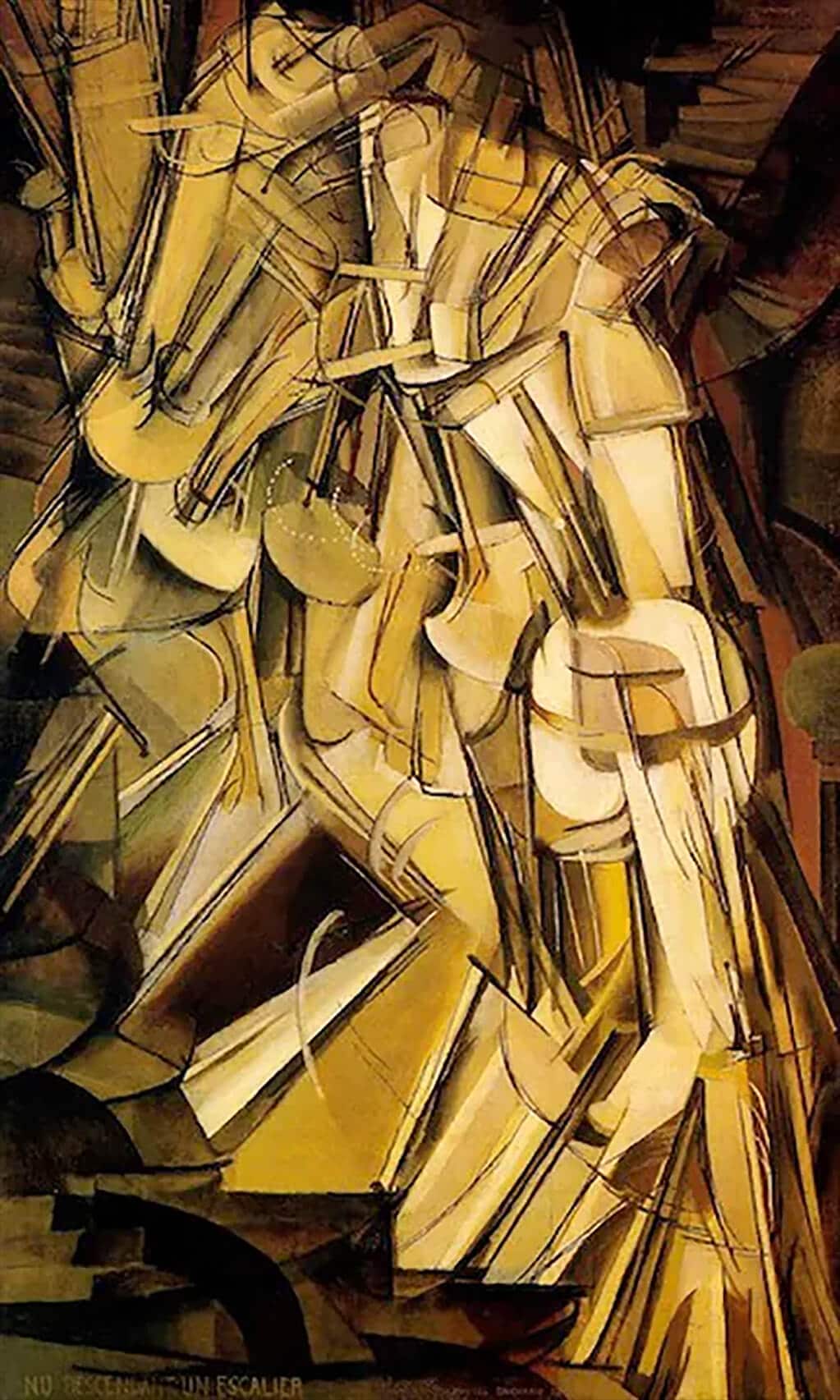Ten poems and the paintings that inspired them
Poetry has always inspired artists. Ovid’s Metamorphoses and Dante’s Divine Comedy are two of the most enduring. And according to Art Everywhere, of which I will say little here but have written about elsewhere, the nation’s favourite painting is inspired by a more recent poem: JW Waterhouse’s The Lady of Shalott shows the ill-fated heroine of Tennyson’s famous verse moving inexorably towards her watery death “like some bold seer in a trance”. The second favourite is, incidentally, another narrative illustration of an ill-fated heroine on the point of meeting her watery fate – Millais’s Ophelia.
The Victorian era was the last big hurrah of literature-inspired visual works of art, and it was decidedly gothic in flavour. But the 20th century saw the death of narrative painting, and illustrations from myth and literature dropped out of fashion.
Painters were still influenced by literature, of course, but the influence, with a few notable exceptions, played out in more abstract, nebulous ways. Instead, we find a decisive switch – it’s writers who turn increasingly to the works of painters and sculptors. Poets looked to the historical canon – I haven’t included it here, but surely Larkin’s An Arundel Tomb is the greatest postwar poem to be inspired by a single work of art. But more often Modernist poets, particularly in America, looked to Modernist artists for inspiration.
The conservative Larkin was no fan of Modernism, seeing ugliness and destruction in its methods. Yet for many other writers, Modernism in the visual arts appeared regenerative in its violence to form. Like visual artists of the 20th century, writers were no longer portraying a window on to the world as it had appeared since the Renaissance, but obviously filtered and changed by the imagination in startling ways. To quote Wallace Stevens (no.4), responding to Picasso’s The Old Guitarist, “Things as they are / Are changed upon the blue guitar.”
Below, responding to old and modern paintings, I’ve chosen nine 20th-century poems and one 21st-century one. The poems are illustrated by the paintings that directly inspired their thoughts.
Mourning Picture, Edwin Romanzo Elmer (1890)
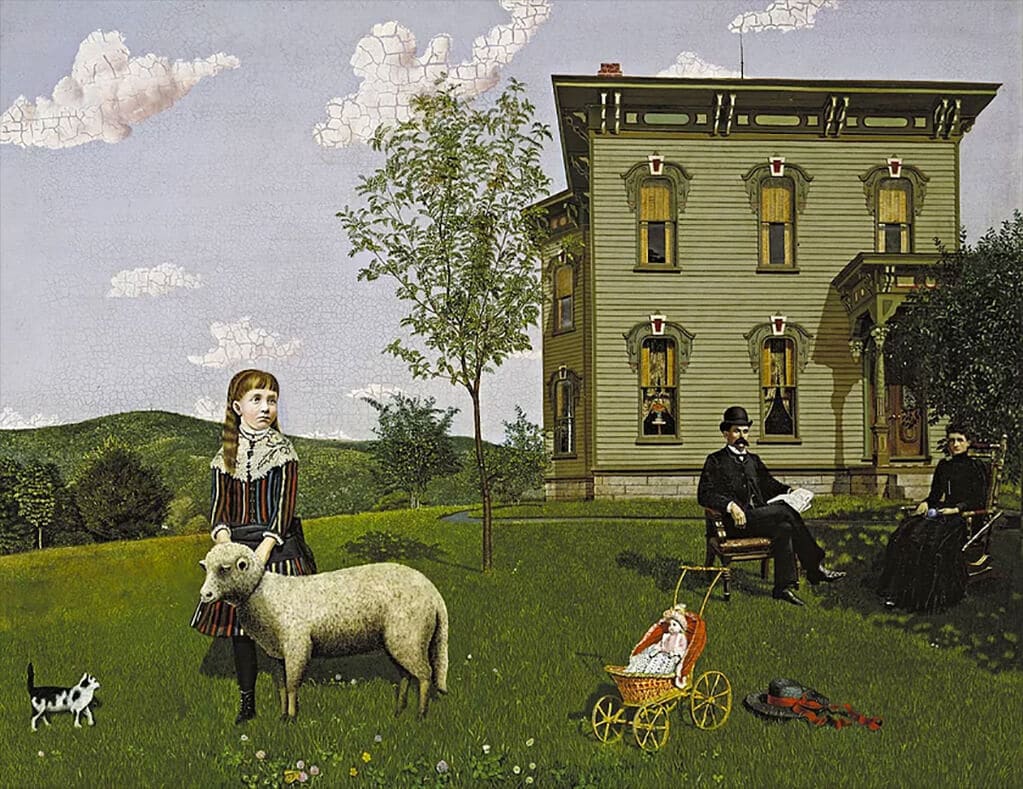
Mourning Picture, Edwin Romanzo Elmer (1890); Smith College Museum of Art, Northampton, Massachusetts
The little-known American artist Edwin Ramanzo Elmer painted this strange and arresting work after the death from appendicitis of his 9-year-old daughter Effie. Here she is portrayed with her pet lamb and kitten, against the clapboard house her father built in Western Massachusetts. The remote and rigid figures of the artist and his wife appear in mourning clothes, though the painting was only given its title decades later, and not by the artist. The narrative voice in Adrienne Rich’s poem belongs to the dead Effie, the couple’s only child. Hauntingly, she compares the veins of the lilac leaf to her father’s “grief-tranced hand”.
1. Mourning Picture, Adrienne Rich (1965)
They have carried the mahogany chair and the cane rocker
out under the lilac bush,
and my father and mother darkly sit there, in black clothes.
Our clapboard house stands fast on its hill,
my doll lies in her wicker pram
gazing at western Massachusetts.
This was our world.
I could remake each shaft of grass
feeling its rasp on my fingers,
draw out the map of every lilac leaf
or the net of veins on my father’s
grief-tranced hand.Out of my head, half-bursting,
still filling, the dream condenses–
shadows, crystals, ceilings, meadows, globes of dew.
Under the dull green of the lilacs, out in the light
carving each spoke of the pram, the turned porch-pillars,
under high early-summer clouds,
I am Effie, visible and invisible,
remembering and remembered.
Landscape with the Fall of Icarus, Pieter Bruegel the Elder (1558)
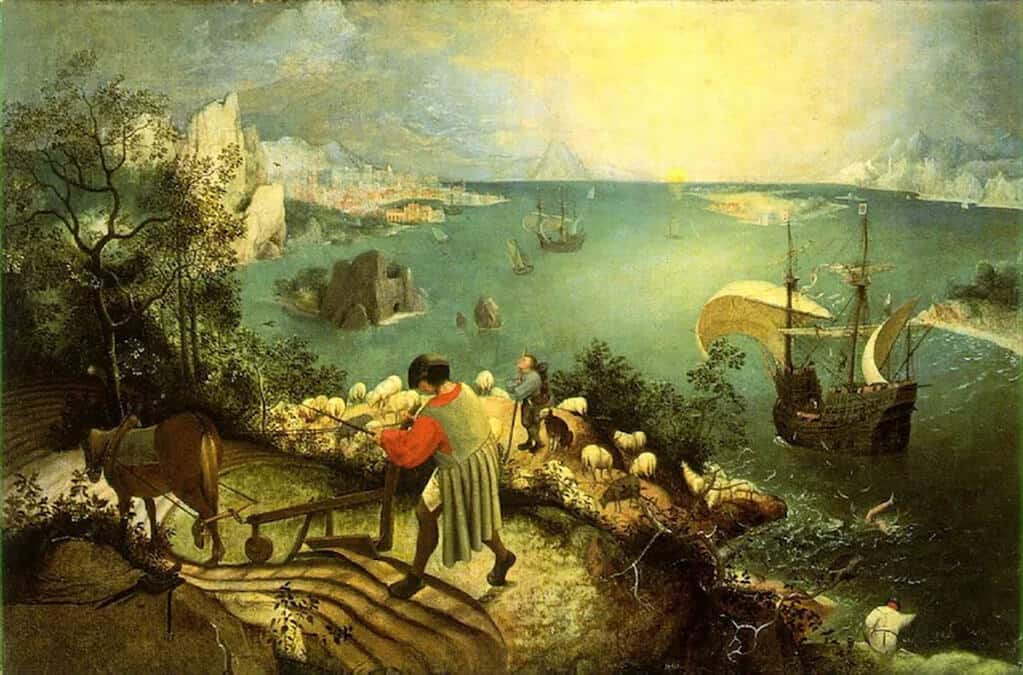
Landscape with the Fall of Icarus, Pieter Bruegel the Elder (1558); Royal Museums of Fine Arts of Belgium
It takes a while for us to spot the pale legs kicking in the green sea to the right of the picture, since Bruegel’s great painting shows the fall of Icarus as an incidental occurrance, not the main event of this scene. But the insignificance of human suffering to the universe is indeed its theme. The plowman carries on with his task, while the “expensive, delicate ship”, after no doubt witnessing the incident, had “somewhere to get to and sailed calmly on.” The Imagist poet William Carlos Williams was also inspired to write a poem about this painting, as well as another famous Bruegel work included here (see no.3).
2. Musée des Beaux Arts, W.H. Auden (1938)
About suffering they were never wrong,
The Old Masters: how well they understood
Its human position; how it takes place
While someone else is eating or opening a window or just walking dully along;
How, when the aged are reverently, passionately waiting
For the miraculous birth, there always must be
Children who did not specially want it to happen, skating
On a pond at the edge of the wood:
They never forgot
That even the dreadful martyrdom must run its course
Anyhow in a corner, some untidy spot
Where the dogs go on with their doggy life and the torturer’s horse
Scratches its innocent behind on a tree.In Brueghel’s Icarus, for instance: how everything turns away
Quite leisurely from the disaster; the plowman may
Have heard the splash, the forsaken cry,
But for him it was not an important failure; the sun shone
As it had to on the white legs disappearing into the green
Water; and the expensive delicate ship that must have seen
Something amazing, a boy falling out of the sky,
Had somewhere to get to and sailed calmly on.
Hunters in the Snow, Pieter Bruegel the Elder (1565)
Bruegel’s breathtaking panoramic painting shows a scene set in harshest winter. The weary hunters of the title are returning home at the end of a disappointing hunt (the rewards of their labours, as we see, are meagre, and even the dogs look a little sorry for themselves, though the expansive view they and we are looking down on is spectacular and uplifting). The scene is described with striking spareness, the poet picking out details that make up the composition as a whole, making us aware of “Bruegel the painter” bringing these elements carefully and strikingly together.
3. Hunters in the Snow, William Carlos Williams (1962)
The over-all picture is winter
icy mountains
in the background the returnfrom the hunt it is toward evening
from the left
sturdy hunters lead intheir pack the inn-sign
hanging from a
broken hinge is a stag a crucifixbetween his antlers the cold
inn yard is
deserted but for a huge bonfirethat flares wind-driven tended by
women who cluster
about it to the right beyondthe hill is a pattern of skaters
Brueghel the painter
concerned with it all has chosena winter-struck bush for his
foreground to
complete the picture
The Old Guitarist, Picasso (1903)
Below are the first four cantos of a poem that extends by a further 29. Stevens’ rigorous and brilliant poem ponders the nature of reality and the quest of artists to profoundly alter it. “Things as they are / Are changed upon the blue guitar,” we are told in the first canto, and the refrain “things as they are” echoes like a recurring motif in a piece of music. Stevens was hugely influenced by the work of Modernist artists who flattened and fragmented pictorial space. His blue guitarist is a “shearsman of sorts”.
4. The Man with the Blue Guitar, Wallace Stevens (1937)
I
The man bent over his guitar,
A shearsman of sorts. The day was green.They said, “You have a blue guitar,
You do not play things as they are.”The man replied, “Things as they are
Are changed upon the blue guitar.”And they said then, “But play, you must,
A tune beyond us, yet ourselves,A tune upon the blue guitar
Of things exactly as they are.”II
I cannot bring a world quite round,
Although I patch it as I can.I sing a hero’s head, large eye
And bearded bronze, but not a man,Although I patch him as I can
And reach through him almost to man.If to serenade almost to man
Is to miss, by that, things as they are,Say that it is the serenade
Of a man that plays a blue guitar.III
Ah, but to play man number one,
To drive the dagger in his heart,To lay his brain upon the board
And pick the acrid colors out,To nail his thought across the door,
Its wings spread wide to rain and snow,To strike his living hi and ho,
To tick it, tock it, turn it true,To bang if form a savage blue,
Jangling the metal of the strings…IV
So that’s life, then: things as they are?
It picks its way on the blue guitar.A million people on one string?
And all their manner in the thingAnd all their manner, right and wrong,
And all their manner, weak and strong?The feelings crazily, craftily call,
Like a buzzing of flies in the autumn air,And that’s life, then: things as they are,
This bussing of the blue guitar.
Self-Portrait at the Age of 63, Rembrandt (1669)
Many of Elizabeth Jennings’s poems are direct responses to paintings; you could take your pick from a prolific pool that takes us from Mantegna to Mondrian. Here she speaks of the searing and unflattering honesty of Rembrandt’s late self-portraits – “Your brush’s care / Runs with self-knowledge” – which, through the unflinching depiction of nature’s cruel changes, help divest us “of fear of death.”
5. Rembrandt's Late Self-Portraits, Elizabeth Jennings (1975)
You are confronted with yourself. Each year
The pouches fill, the skin is uglier.
You give it all unflinchingly. You stare
Into yourself, beyond. Your brush’s care
Runs with self-knowledge. HereIs a humility at one with craft.
There is no arrogance. Pride is apart
From this self-scrutiny. You make light drift
The way you want. Your face is bruised and hurt
But there is still love left.Love of the art and others. To the last
Experiment went on. You stared beyond
Your age, the times. You also plucked the past
And tempered it. Self-portraits understand,
And old age can divest,With truthful changes, us of fear of death.
Look, a new anguish. There, the bloated nose,
The sadness and the joy. To paint’s to breathe,
And all the darknesses are dared. You chose
What each must reckon with.
The Starry Night, Van Gogh (1889)
Van Gogh’s painting conveys both a sense of furious motion and an atmosphere of serenity: stars radiate in a turbulent sky, yet the town below, whose existence Sexton negates in the first line, appears calm and empty. Sexton, who committed suicide in 1974, longs for the oblivion of death, as if death were but to disappear “into that rushing beast of night / sucked up by that great green dragon”. The poem is not so much a howl of pain, but rather an urgent expression of an all-consuming desire – the irrepressible desire to be overpowered by a force greater than oneself.
6. The Starry Night, Anne Sexton (1961)
The town does not exist
except where one black-haired tree slips
up like a drowned woman into the hot sky.
The town is silent. The night boils with eleven stars.
Oh starry starry night! This is how
I want to die.It moves. They are all alive.
Even the moon bulges in its orange irons
to push children, like a god, from its eye.
The old unseen serpent swallows up the stars.
Oh starry starry night! This is how
I want to die:into that rushing beast of the night,
sucked up by that great dragon, to split
from my life with no flag,
no belly,
no cry.
The Disquieting Muses, de Chirico (1918)
The unsettling mood of De Chirico’s painting is not only matched but heightened in Sylvia Plath’s disturbing poem in which she imagines her childhood self haunted by three faceless muses, who recall the Three Fates of classical mythology, as well as other trios of sinister women from myth and literature. With their terrifying blank faces, they “stand vigil” over her, their strange figures, like de Chirico’s painting, casting their long shadows “in the setting sun / That never brightens or goes down”.
7. The Disquieting Muses, Sylvia Plath (1957)
Mother, mother, what ill-bred aunt
Or what disfigured and unsightly
Cousin did you so unwisely keep
Unasked to my christening, that she
Sent these ladies in her stead
With heads like darning-eggs to nod
And nod and nod at foot and head
And at the left side of my crib?Mother, who made to order stories
Of Mixie Blackshort the heroic bear,
Mother, whose witches always, always,
Got baked into gingerbread, I wonder
Whether you saw them, whether you said
Words to rid me of those three ladies
Nodding by night around my bed,
Mouthless, eyeless, with stitched bald head.In the hurricane, when father’s twelve
Study windows bellied in
Like bubbles about to break, you fed
My brother and me cookies and Ovaltine
And helped the two of us to choir:
“Thor is angry: boom boom boom!
Thor is angry: we don’t care!”
But those ladies broke the panes.When on tiptoe the schoolgirls danced,
Blinking flashlights like fireflies
And singing the glowworm song, I could
Not lift a foot in the twinkle-dress
But, heavy-footed, stood aside
In the shadow cast by my dismal-headed
Godmothers, and you cried and cried:
And the shadow stretched, the lights went out.Mother, you sent me to piano lessons
And praised my arabesques and trills
Although each teacher found my touch
Oddly wooden in spite of scales
And the hours of practicing, my ear
Tone-deaf and yes, unteachable.
I learned, I learned, I learned elsewhere,
From muses unhired by you, dear motherI woke one day to see you, mother,
Floating above me in bluest air
On a green balloon bright with a million
Flowers and bluebirds that never were
Never, never, found anywhere.
But the little planet bobbed away
Like a soap-bubble as you called: Come here!
And I faced my traveling companions.,Day now, night now, at head, side, feet,
They stand their vigil in gowns of stone,
Faces blank as the day I was born,
Their shadows long in the setting sun
That never brightens or goes down.
And this is the kingdom you bore me to,
Mother, mother. But no frown of mine
Will betray the company I keep.
Nude Descending a Staircase, Duchamp (1912)
Duchamp’s Nude Descending a Staircase was shown at the famous 1913 Armory Show in New York, where it naturally caused a stir. By then the father of conceptual art had decisively rejected what he dismissively termed “retinal art” and in the same year produced Bicycle Wheel, his first ready-made and the world’s first kinetic work of art. X.J. Kennedy captures the figure’s unthinking, mechanistic movement – “A constant thresh of thigh on thigh.”
8. Nude Descending a Staircase, X. J. Kennedy (1961)
Toe upon toe, a snowing flesh,
A gold of lemon, root and rind,
She sifts in sunlight down the stairs
With nothing on. Nor on her mind.We spy beneath the banister
A constant thresh of thigh on thigh–
Her lips imprint the swinging air
That parts to let her parts go by.One-woman waterfall, she wears
Her slow descent like a long cape
And pausing, on the final stair
Collects her motions into shape.
L’Estaque, Cézanne (1883)
Cézanne painted around 20 views of L’Estaque, a fishing village just west of Marseille. These show the change of seasons and the shifting patterns of light at different times of day. However, the artist strove to achieve a sense of timeless monumentality that he felt was missing from the work of the Impressionists. Here Allen Ginsberg looks beyond what he believes the painting merely describes and toward a transcendent reality that “doesn’t occur on the canvas”. Beyond the bay, and away from the foreground where we find “time and life / swept in a race”, is, he says “Heaven and Eternity”.
9. Cézanne's Ports, Allen Ginsberg (1950)
In the foreground we see time and life
swept in a race
toward the left hand side of the picture
where shore meets shore.But that meeting place
isn’t represented;
it doesn’t occur on the canvas.For the other side of the bay
is Heaven and Eternity,
with a bleak white haze over its mountains.And the immense water of L’Estaque is a go-between
for minute rowboats.
Diana and Actaeon, Titian (1556-59)
Titian’s painting depicts a scene between Diana and Actaeon from Ovid’s Metamorphoses. It shows the moment of accidental discovery as Actaeon, after a day’s hunting, spies the naked Diana bathing with her nymphs. Actaeon is at once transformed into a stag and is chased and killed by his own dogs, who do not recognise him. Szirties’ poem begins with a quote from Donne’s Elegy XX (From His Mistress Going to Bed): “O My America, My Newfoundland”, a tantalising play on sexual discovery and conquest. The poem is told from the point of view of Actaeon, with Diana taking on a strange and somewhat sinister role – “you, drinking / night water” reads as an accusation from the mouth of one unjustly wronged but admitting of his desire all the same.
10. Actaeon, George Szirtes (2012)
O, my America, my Newfoundland
John Donne, “Elegy 20”O, my America, discovered by slim chance,
behind, as it seemed, a washing line
I shoved aside without thinking –
does desire have thoughts or define
its object, consuming all in a glance?You, with your several flesh sinking
upon itself in attitudes of hurt,
while the dogs at my heels
growl at the strange red shirt
under a horned moon, you, drinkingnight water – tell me what the eye steals
or borrows. What can’t we let go
without protest? My own body turns
against me as I sense it grow
contrary. Whatever night revealsis dangerously toothed. And so the body burns
as if torn by sheer profusion of skin
and cry. It wears its ragged dress
like something it once found comfort in,
the kind of comfort even a dog learnsby scent. So flesh falls away, ever less
human, like desire itself, though pain
still registers in the terrible balance
the mind seems so reluctant to retain,
o, my America, my nakedness!

